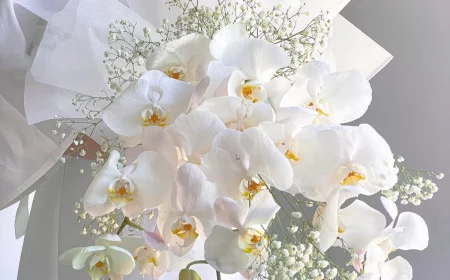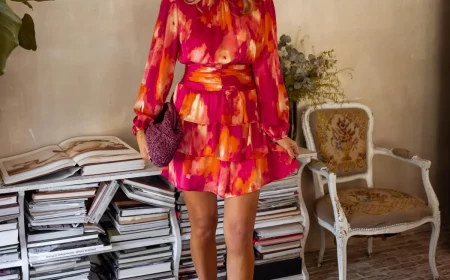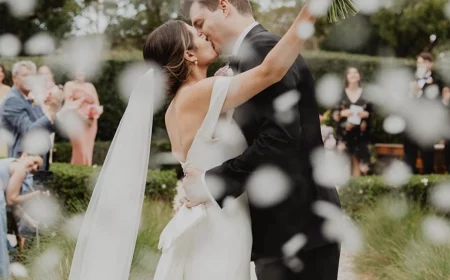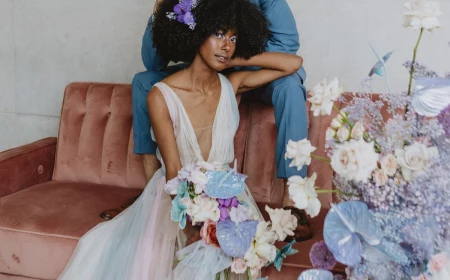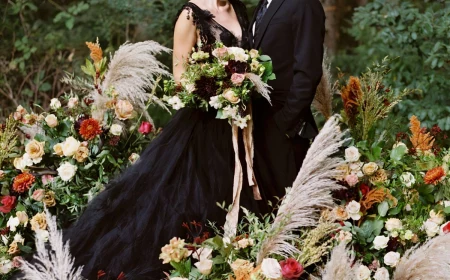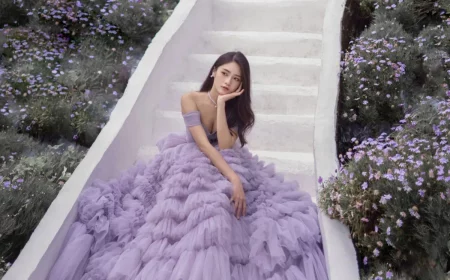A Seamstress’s Guide to Wedding Dresses: What You *Actually* Need to Know
In all my years working in my alterations studio, I’ve seen it all. Brides float in with these big, hopeful dress bags, their phones full of screenshots. They know the trends, but they don’t always know what makes a dress feel as good as it looks. And that’s my job—to connect the dots between the dream photo and the real-life experience.
In this article
It’s about more than just a needle and thread. It’s about making sure you can laugh, hug, and dance without a single worry. I’ll never forget one bride who brought in a stunning, heavily beaded mermaid gown. On the model, it was a showstopper. But in our first fitting, she could barely sit down, and walking felt like a chore. We talked about her day, about wanting to dance with her dad and scoop up her little nephew. That dress, as beautiful as it was, wasn’t her dress for her day.
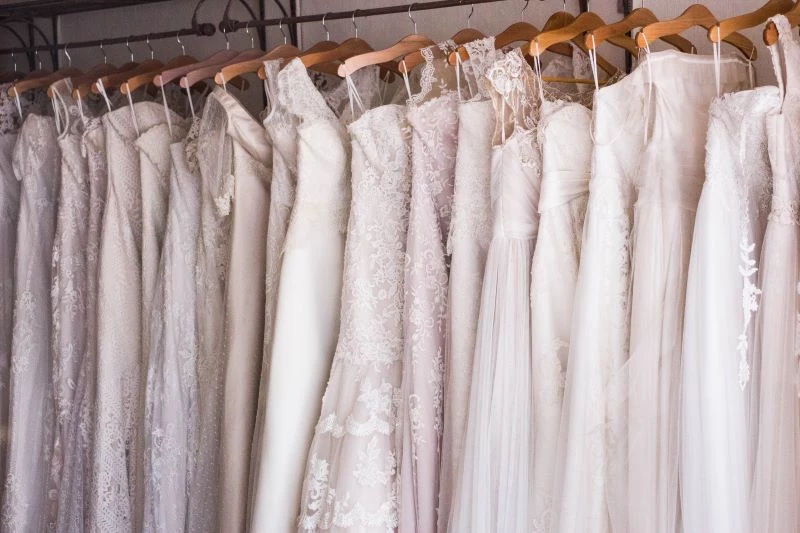
So, this is everything I wish I could tell every bride before she even starts shopping. We’re going to look past the sparkle and get into the nitty-gritty of how these gowns are actually built. Trust me, this knowledge is your secret weapon to finding a dress that feels as incredible as it looks.
The Starting Point: Why Shape is Everything
The first thing anyone sees is the silhouette—the overall shape of your dress. It’s the foundation for everything else, and each one is built differently, which means they all move, feel, and fit in unique ways.
The A-Line: The People-Pleaser
You can’t go wrong with a classic. The A-line is fitted through the bodice and then gracefully flares out from the waist, creating a soft ‘A’ shape. It’s a bestseller for a reason: it’s incredibly flattering and comfortable because it doesn’t cling to the hips.
Its shape comes from the way the fabric panels are cut, not from a ton of complicated stuff underneath. Stiffer fabrics like Mikado will give you a sharp, architectural ‘A’, while flowy materials like chiffon create a softer, more romantic vibe. Usually, a few layers of tulle are all that’s needed to give it some body. From my experience, A-lines are also a dream to alter. Adjusting the bodice is usually straightforward, and hemming, while sometimes tedious with multiple layers, is less complex than with other styles.
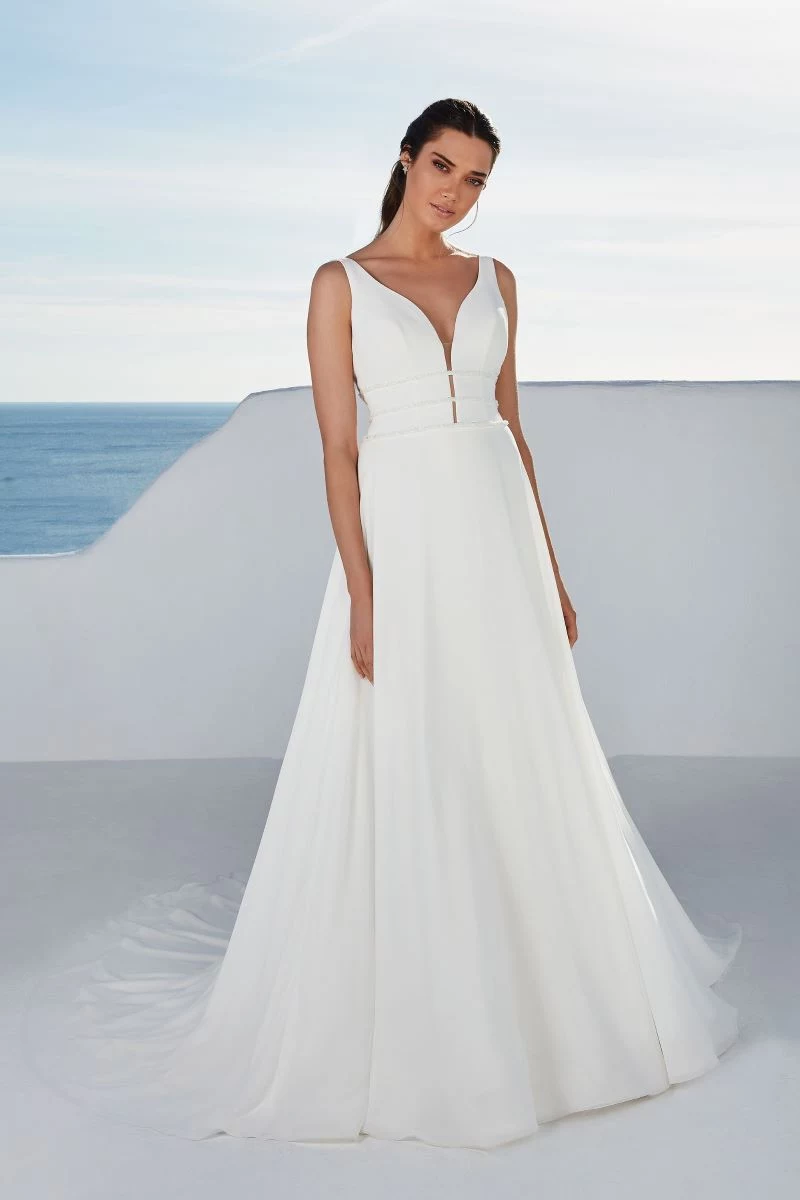
The Ball Gown: For Maximum Drama
This is your fairytale moment. A ball gown has a super-fitted bodice and a huge, full skirt that explodes from the waist. But all that drama comes with a few practical footnotes you need to consider.
A skirt that big can’t hold itself up. It needs serious support, usually a crinoline (a petticoat with light hoops) or just mountains of tulle. I’ve worked on ball gowns with over 20 yards of fabric in the skirt alone, so they are HEAVY. I always tell my brides to be realistic—can you wear this for 8-10 hours? Navigating doorways and even using the restroom can become a strategic mission. Alterations can also get pricey. If the hem has a delicate lace edge, I have to painstakingly detach it, cut every layer of the skirt, and then perfectly reattach the trim. It’s a ton of work, and the cost reflects that.
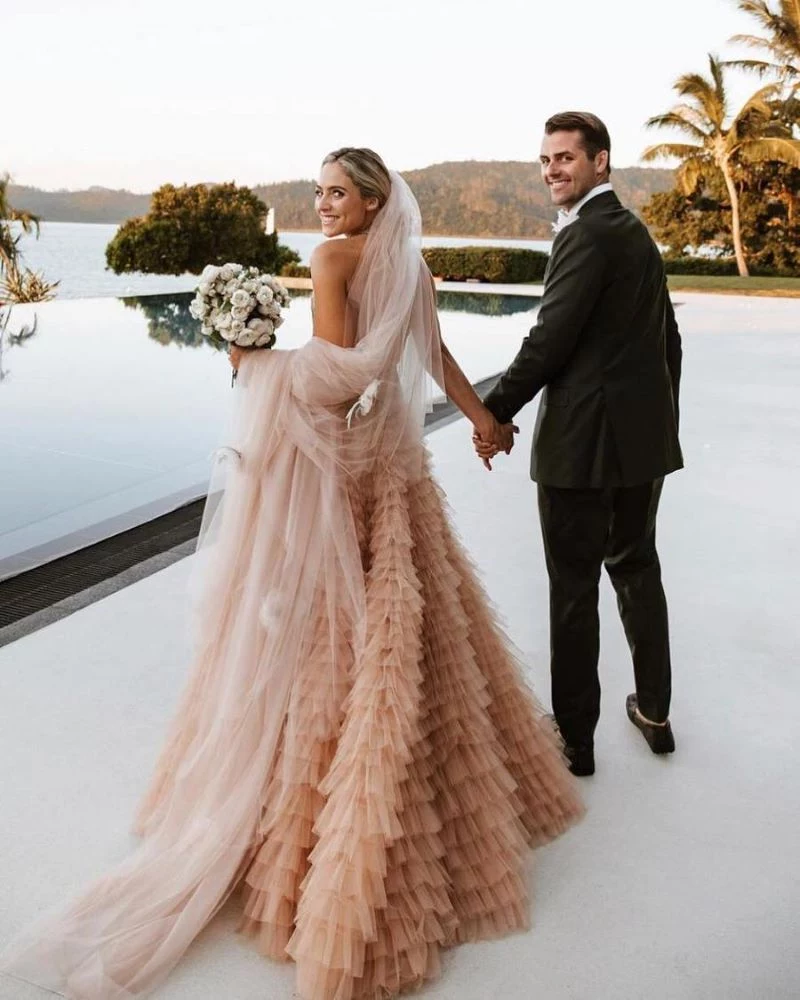
Mermaid & Trumpet: All About the Curves
People mix these up all the time. A mermaid gown is tight all the way to the knee, then flares out dramatically. A trumpet starts its flare a little higher, around mid-thigh. Both are designed to flaunt an hourglass shape, and honestly, they’re an engineering marvel.
The fit has to be dead-on perfect, with zero room for error. A quick tip for when you’re trying these on: do the ‘sit test’ and a ‘hug test.’ Sit down in the chair. Does the fabric pull uncomfortably? Does it ride up a ton? Now, give yourself a hug. Does any beading or boning dig into you? If so, it needs to be let out. This is the hardest silhouette to fit correctly, and it’s not the best choice if you want to bust out serious moves on the dance floor.
The Sheath: Effortless and Chic
A sheath dress drapes straight down, skimming your natural curves without being clingy. It’s a very modern and sophisticated look, perfect for more relaxed or outdoor weddings.
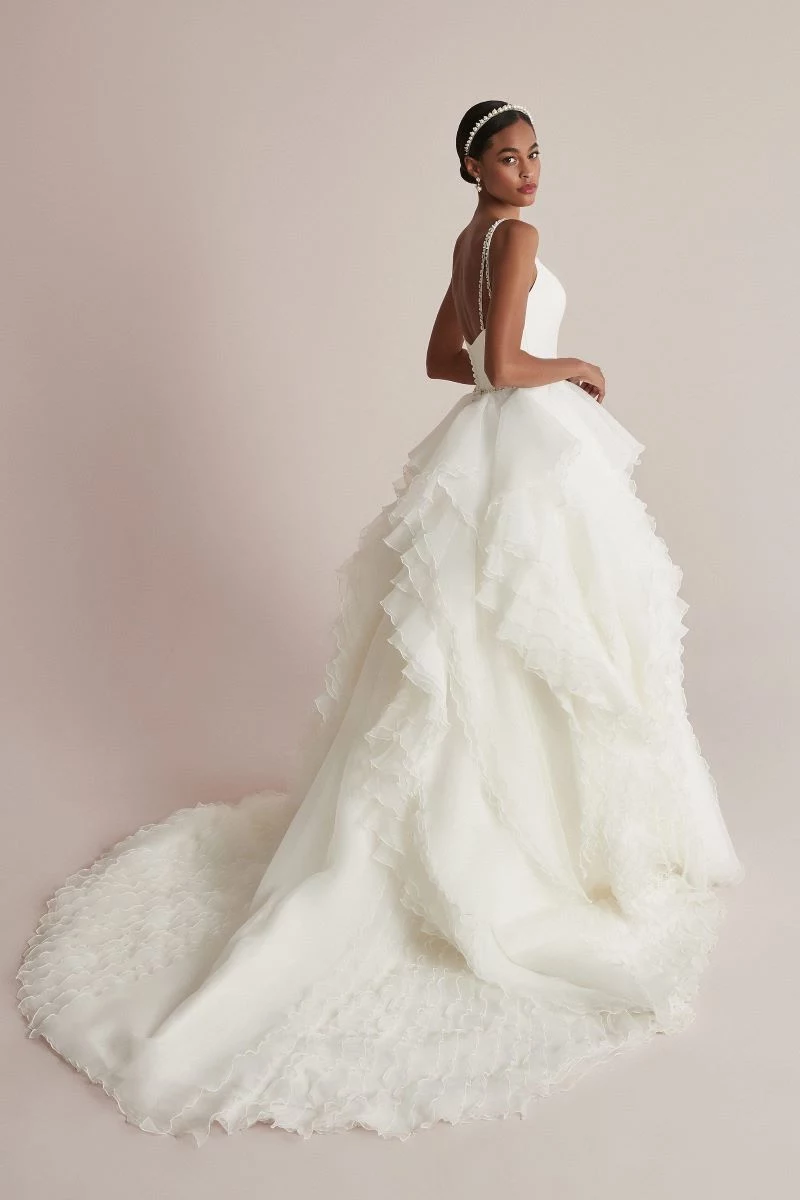
The magic is in the simplicity and the fabric. It relies on beautiful, fluid materials like crepe or charmeuse. Because there’s no real internal structure, every little detail is on display. Here’s a heads up: your choice of undergarments is CRITICAL. You’ll need totally seamless underwear, maybe from a brand like Commando or Spanx, because slinky fabric shows everything. Often, we sew cups directly into the dress so you don’t have to worry about a bra. It’s a gorgeous choice that really elongates the body.
The Heart of the Dress: Let’s Talk Fabrics
Fabric is what gives a dress its soul. It dictates how it moves, feels, and photographs. I have a love-hate relationship with some of them, but knowing their quirks will help you choose wisely.
Structural Fabrics (The Architects)
- Mikado: A beautiful, thick blended silk with a soft glow. It’s amazing for clean, structured gowns and—good to know—it resists wrinkling surprisingly well. It’s a favorite among designers for a reason.
- Satin: Known for its high shine and luxe feel. It can be gorgeous, but it’s also a diva. It shows every single pinprick and can snag easily. A word of caution: polyester satin doesn’t breathe, which can be a nightmare for a summer wedding.
- Taffeta: A crisp, light fabric that makes a cool rustling sound. It holds its shape well but has a high wrinkle factor. You’ll definitely need a good steamer on standby on the wedding day.
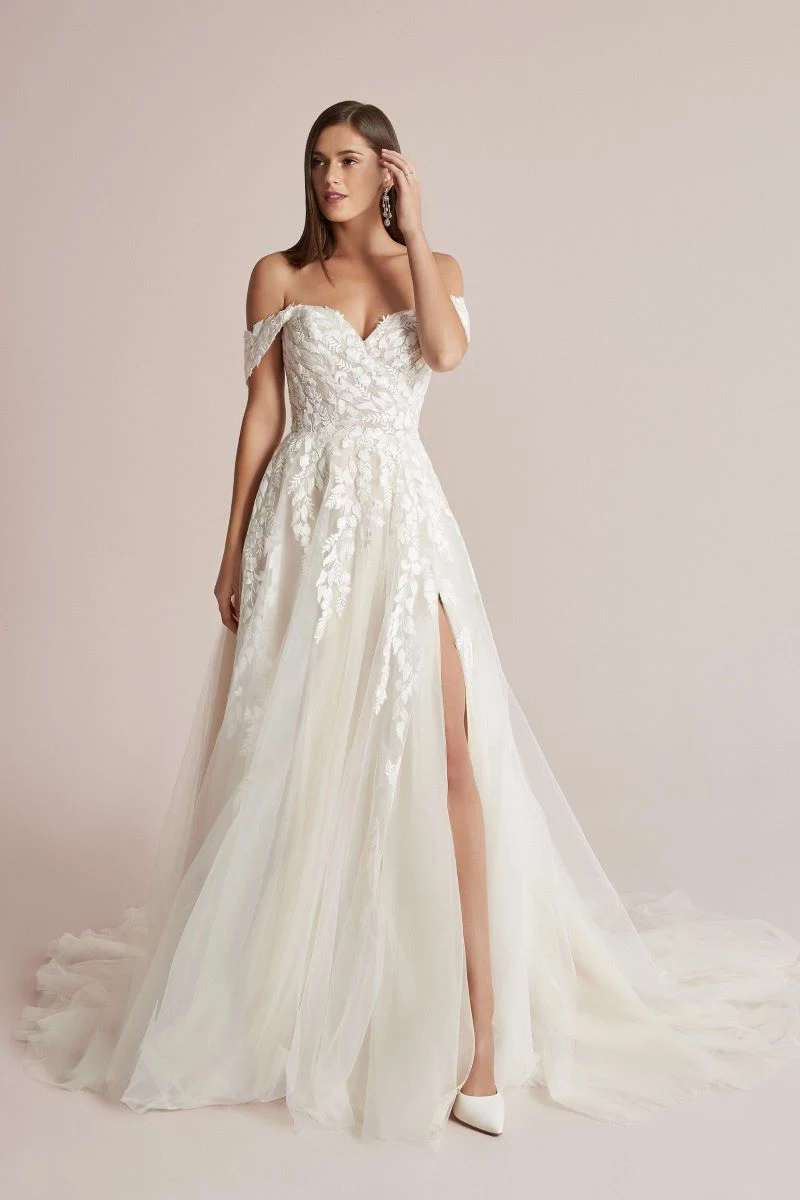
Fluid Fabrics (The Dancers)
- Chiffon: Incredibly light, airy, and ethereal. It’s almost always used in layers to create a dreamy, floating effect. It’s delicate and can snag, so handle with care. Perfect for a beachy vibe.
- Crepe: A clean, modern-looking fabric that’s soft and has a bit of comfortable stretch. It drapes beautifully and is super flattering. High-quality silk crepe is pricey, but the modern poly-blends are fantastic and more budget-friendly.
- Organza: Think of it as chiffon’s stiffer cousin. It’s sheer and crisp, adding volume without adding a lot of weight. It has a lovely shimmer but, like taffeta, it can be prone to wrinkling.
The Decorative Touches (The Icing)
Lace is a whole world unto itself. The most famous styles are known for their distinct looks. You’ll see fine, delicate patterns that feel soft and are great for sleeves. Then there’s bolder lace with motifs that look almost like appliqué, giving the dress a 3D texture. When I alter a lace dress, it’s like solving a puzzle. I have to cut around the patterns to hide the seams, which is why lace alterations often cost more. It’s pure artistry.
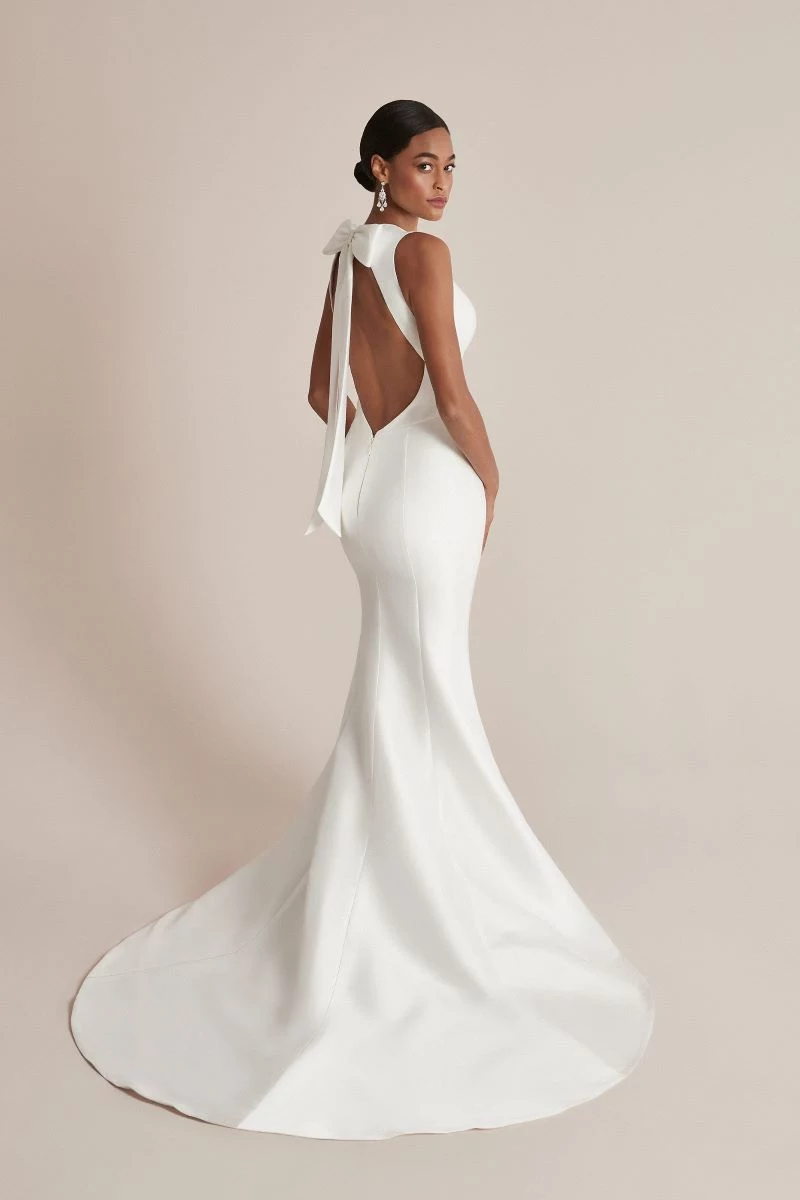
The Inner Workings: What Makes a Dress Great
You can tell a lot about a dress by looking inside. The interior construction is the difference between a good dress and a truly great one.
Bodice and Boning
A well-made bodice should feel like a gentle hug, supporting you so you don’t need a complicated bra. The secret is boning. High-end gowns use flexible spiral steel boning. A pro tip to spot the good stuff: gently try to bend one of the bones through the fabric. Does it have a strong, springy feel? That’s quality. If it feels flimsy or stays bent, that’s likely cheap plastic that can warp from your body heat. Also, just ask your bridal consultant! They should know.
Closures: Zippers, Buttons, and Corsets
How a dress closes is both a functional and a style choice. Most modern gowns use an invisible zipper, which should lie perfectly flat. If it’s tough to zip, the dress is likely too tight. Fabric-covered buttons are a beautiful, traditional touch, but most of the time they’re just for show, hiding a zipper underneath (thank goodness!). A lace-up corset back is great because it’s adjustable, but it’s a very specific look and requires a patient helper to lace you in correctly.
The Engineering of Bare Designs
Off-the-shoulder and backless styles seem like magic, but it’s all clever engineering. For an off-the-shoulder dress, the support should come from a well-boned internal bodice, not tight elastic in the sleeves. A quick test: lift your arms up. If the whole dress shifts or feels like it’s going to fall, the construction isn’t doing its job. For a backless dress, all the support has to come from the front and sides, often with sheer illusion netting to provide invisible structure. We almost always sew in bust cups for these styles.
Let’s Talk Money: The Truth About Alteration Costs
Please, please, please budget for alterations! It’s the step that makes a dress truly yours. The cost can vary wildly, so it’s smart to have a realistic idea of what to expect. Don’t let it be a surprise.
To give you a ballpark, here’s what I typically see. Keep in mind, prices are higher in major cities and for highly experienced specialists.
- The Hem: This is the most common alteration. For a simple sheath dress with one or two layers, you might be looking at $150 – $250. But for a ball gown with tons of layers and a delicate horsehair or lace trim that has to be re-applied by hand? That can easily run $400 – $700+.
- Taking in the Sides/Bust: A standard adjustment to the bodice seams usually falls between $100 – $300, depending on if there’s beading or lace that needs to be moved.
- Adding a Bustle: A simple 3-point over-bustle could be around $75 – $150. A more complex French bustle with multiple ties will cost more.
- Other tweaks: Adding sleeves, sewing in cups, or changing a neckline are custom jobs, and the price will depend on the labor and materials involved.
The Fitting Process: Your Pre-Wedding Game Plan
I recommend a three-step process to make sure everything is perfect without any last-minute stress.
First Fitting (3-4 months out): This is the big one. We’ll pin the major adjustments like the hem and side seams. To make this appointment a success, you need a checklist:
- [ ] Your EXACT wedding shoes. No exceptions! The heel height changes everything.
- [ ] The undergarments you plan to wear.
- [ ] A list of any questions or concerns you have.
- [ ] A trusted friend for a second opinion and to take photos from all angles.
Second Fitting (1-2 months out): By now, the main work is done. We’ll check the fit and fine-tune the details. This is also when we’ll design and install the bustle. Oh yeah, the bustle! It’s the system of hooks or ribbons that lifts your train for the reception. There are a few main types, like an ‘American’ bustle that folds the train up over the outside of the skirt, or a ‘French’ one that tucks it under for a beautiful draped look. We’ll practice it so your maid of honor becomes a pro.
Final Fitting (2-3 weeks out): This is the final check! The dress should fit like a glove. You’ll take it home, ready for the big day. A quick story: I once had a bride who lost a lot of weight after her second fitting. We had to do a panicked, last-minute overhaul. Try to be at a stable, comfortable weight when you start the process to avoid stress!
Finding Your Sewing Guru & Final Words of Wisdom
Unless it’s a super simple hem on a basic dress, alterations are not a DIY project. You need a professional. But how do you find a good one?
- Start by asking the bridal shop for recommendations, but always, always check their independent reviews online.
- Look for specialists. Some are part of professional associations which can be a good sign of quality.
- Ask to see their work! A good seamstress will be proud to show you photos of recent projects, especially if they’ve worked on fabrics or silhouettes like yours.
Before you go, a couple last things. Be incredibly careful with open flames like candles—lightweight fabrics like tulle are highly flammable. And your bustle is your best friend for the reception, but it’s not invincible. I always tell my brides to have a little emergency kit with a few safety pins just in case a loop or button gives way on the dance floor.
And when you get your dress home? Hang it up high, away from pets and sunlight. A day or two before the wedding, take it out of the garment bag to let it breathe and allow any stubborn wrinkles to fall out. If you have a steamer, use it on a low setting and always keep it moving to avoid water spots. Choosing a wedding dress is such a special journey. Armed with a little insider knowledge, you can pick a gown that’s not just beautiful, but is beautifully you. Happy hunting!

